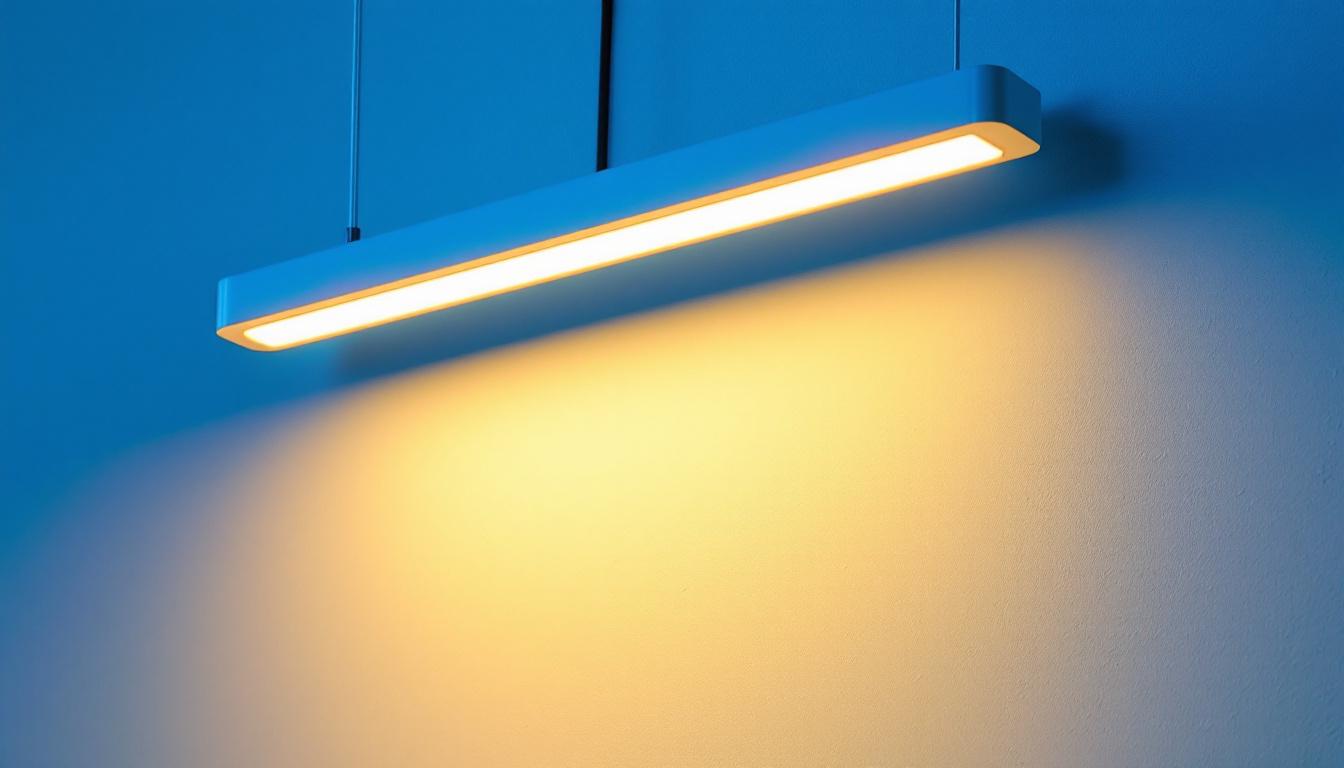
As the demand for energy-efficient lighting solutions continues to rise, LED panels have emerged as a popular choice among lighting contractors. These panels not only provide excellent illumination but also offer versatility and longevity. However, to maximize their benefits, it is crucial for contractors to understand best practices in installation, maintenance, and design. This article explores essential guidelines and insights to enhance the effectiveness of LED panels in various applications.
Before diving into best practices, it is essential to grasp the fundamental technology behind LED panels. LED (Light Emitting Diode) panels are flat light fixtures that utilize semiconductor technology to emit light. They are known for their energy efficiency, long lifespan, and low heat generation. Understanding these characteristics can help contractors make informed decisions during installation and maintenance. The technology behind LEDs is constantly evolving, with advancements in materials and design leading to even greater efficiencies and capabilities. For instance, the introduction of organic LEDs (OLEDs) has opened up possibilities for flexible and transparent lighting solutions, pushing the boundaries of traditional panel designs.
LED panels offer numerous advantages over traditional lighting options. Their energy efficiency can lead to significant cost savings on electricity bills, making them an attractive choice for both residential and commercial projects. Additionally, LED panels have a longer lifespan, often lasting up to 50,000 hours or more, which reduces the frequency of replacements and maintenance costs. This longevity not only translates to financial savings but also contributes to sustainability efforts by minimizing waste and the environmental impact associated with frequent bulb replacements.
Moreover, LED panels are available in various color temperatures and designs, allowing contractors to create customized lighting solutions tailored to specific environments. From offices to retail spaces, the versatility of LED panels can enhance the aesthetic appeal and functionality of any area. The ability to choose from warm to cool white light, or even colored options, enables designers to influence mood and productivity in workspaces, while also creating inviting atmospheres in hospitality settings. Furthermore, the low heat output of LED panels reduces the load on air conditioning systems, further enhancing energy savings in commercial buildings.
When selecting LED panels, contractors should pay attention to several key specifications. Lumens indicate the brightness of the panel, while wattage reflects energy consumption. A higher lumen output at a lower wattage signifies better energy efficiency. Additionally, contractors should consider the color rendering index (CRI), which measures how accurately colors appear under the light. A CRI of 80 or above is generally recommended for most applications. In environments where color accuracy is crucial, such as art galleries or design studios, opting for panels with a CRI of 90 or higher can significantly enhance the visual experience.
Other specifications to consider include the panel’s dimensions, installation type (recessed, surface-mounted, or suspended), and dimming capabilities. Understanding these factors will help contractors choose the right panels for their projects and ensure optimal performance. Additionally, it’s important to evaluate the panel’s thermal management features, as effective heat dissipation can prolong the lifespan of the LEDs and maintain consistent performance. Some advanced models even come equipped with smart technology, allowing for integration with building management systems and offering features such as remote control and automated lighting adjustments based on occupancy or natural light levels. This level of sophistication not only enhances user convenience but also contributes to overall energy efficiency in modern building designs.
Proper installation is crucial for maximizing the performance and lifespan of LED panels. Following best practices during the installation process can prevent common issues and ensure that the lighting meets the intended design and functional goals.
Before installation, it is essential to plan the layout of the LED panels carefully. Consider the room’s dimensions, ceiling height, and purpose. For example, in an office setting, a grid layout may provide uniform lighting, while in a retail space, focused lighting on displays may enhance product visibility. Utilizing lighting design software can aid in visualizing the layout and ensuring optimal light distribution.
Additionally, contractors should account for the spacing between panels. A general rule of thumb is to space panels 1.5 to 2 times the height of the ceiling. This spacing helps achieve even illumination while minimizing shadows and dark spots.
Before installing LED panels, it is vital to ensure that the electrical system is compatible with the panels being used. This includes checking voltage requirements and ensuring that the circuit can handle the total wattage of the installed panels. Using a dedicated circuit for LED panels can prevent overload and potential damage to the fixtures.
Moreover, contractors should verify that the dimming systems in use are compatible with LED technology. Not all dimmers work well with LED panels, and using incompatible dimmers can lead to flickering or reduced lifespan of the panels. Consulting manufacturer guidelines can help avoid these issues.
When it comes to mounting LED panels, following the manufacturer’s instructions is paramount. For recessed installations, ensure that the cutout dimensions are accurate and that the panel is securely fastened to prevent sagging or falling. For surface-mounted or suspended installations, use appropriate mounting hardware and ensure that the panels are level.
Additionally, consider the thermal management of the panels. LED panels generate heat, and proper ventilation is essential to prolong their lifespan. Ensure that there is adequate airflow around the panels, especially in enclosed spaces.
Regular maintenance is key to ensuring the longevity and performance of LED panels. Establishing a maintenance schedule can help identify and address any issues before they escalate, ensuring that the lighting remains effective and efficient.
Dust and dirt can accumulate on LED panels over time, diminishing their light output and efficiency. Regular cleaning is essential to maintain optimal performance. Use a soft, dry cloth to wipe down the surface of the panels, and avoid using harsh chemicals that could damage the finish.
For panels installed in high-traffic areas or environments prone to dust, more frequent cleaning may be necessary. Contractors should educate clients on the importance of maintaining clean panels and provide guidance on safe cleaning practices.
Despite their reliability, LED panels can encounter issues that may require troubleshooting. Common problems include flickering, dimming, or complete failure. Flickering can often be attributed to incompatible dimmers or fluctuations in the electrical supply. Ensuring that the dimming system is compatible with LED technology can prevent this issue.
If panels are dimming unexpectedly, it may indicate that the power supply is insufficient or that the panels are nearing the end of their lifespan. In such cases, contractors should assess the electrical system and consider replacing the panels if necessary. Keeping a record of installation dates and maintenance can help track the lifespan of the panels.
As technology advances, upgrading or retrofitting existing lighting systems with LED panels can provide enhanced efficiency and performance. Contractors should stay informed about the latest developments in LED technology to offer clients the best options available.
Upgrading to newer LED panels can also improve energy efficiency and reduce maintenance costs. When retrofitting, ensure that the existing fixtures are compatible with the new panels and that any necessary modifications are made to the electrical system.
Design plays a crucial role in the effectiveness of LED panels. Understanding how to integrate these panels into various environments can enhance both functionality and aesthetics.
Choosing the right color temperature is essential for achieving the desired ambiance in a space. LED panels are available in a range of color temperatures, typically measured in Kelvin (K). Warmer temperatures (2700K-3000K) create a cozy atmosphere, making them ideal for residential settings, while cooler temperatures (4000K-5000K) are better suited for commercial spaces where a more energetic environment is desired.
Contractors should consider the purpose of the space when selecting color temperatures. Additionally, the use of tunable white LED panels allows for flexibility in color temperature, enabling adjustments based on the time of day or specific activities.
Smart technology integration is becoming increasingly popular in lighting design. LED panels can be equipped with smart controls that allow users to adjust brightness, color temperature, and even create lighting scenes through mobile apps or voice commands. This level of control enhances user experience and can lead to energy savings.
Contractors should familiarize themselves with available smart technology options and educate clients on the benefits of incorporating these features into their lighting systems. This not only adds value to the project but also positions contractors as forward-thinking professionals in the industry.
As sustainability becomes a priority for many clients, contractors should consider eco-friendly design practices when working with LED panels. This includes selecting panels with recyclable materials and energy-efficient designs. Additionally, promoting the use of LED panels can contribute to reduced carbon footprints and lower energy consumption.
Contractors can also encourage clients to consider daylight harvesting strategies, where natural light is utilized to complement artificial lighting. This approach not only enhances the space’s ambiance but also reduces reliance on electric lighting, further promoting sustainability.
LED panels represent a significant advancement in lighting technology, offering energy efficiency, versatility, and longevity. By understanding the technology, adhering to best practices in installation and maintenance, and considering design elements, lighting contractors can maximize the benefits of LED panels for their clients.
As the lighting industry continues to evolve, staying informed about the latest trends and technologies will be essential for contractors looking to remain competitive. By embracing innovation and prioritizing quality, contractors can ensure that their projects not only meet but exceed client expectations.
Incorporating these best practices will not only enhance the performance of LED panels but also solidify the contractor’s reputation as a knowledgeable and reliable professional in the lighting industry.
Ready to elevate your lighting projects with the best LED panels on the market? Look no further than LumenWholesale, where we provide lighting contractors with superior, spec-grade lighting solutions at unbeatable wholesale prices. Our commitment to quality and affordability ensures that you can deliver exceptional results to your clients without breaking the bank. Plus, with free shipping on bulk orders, you can stock up on premium lighting effortlessly. Don’t settle for less—choose LumenWholesale for Wholesale Lighting at the Best Value and make your next project shine.

Discover expert insights from lighting contractors on determining the perfect number of recessed lights for any space.

Explore the benefits and drawbacks of outdoor cafe lights for lighting contractors.

Discover essential best practices for using a 100W metal halide bulb, boosting lighting efficiency and safety. Enhance your projects—learn expert tips today!.

Discover the benefits of LED 2Ft lights in transforming your space into an energy-efficient haven.